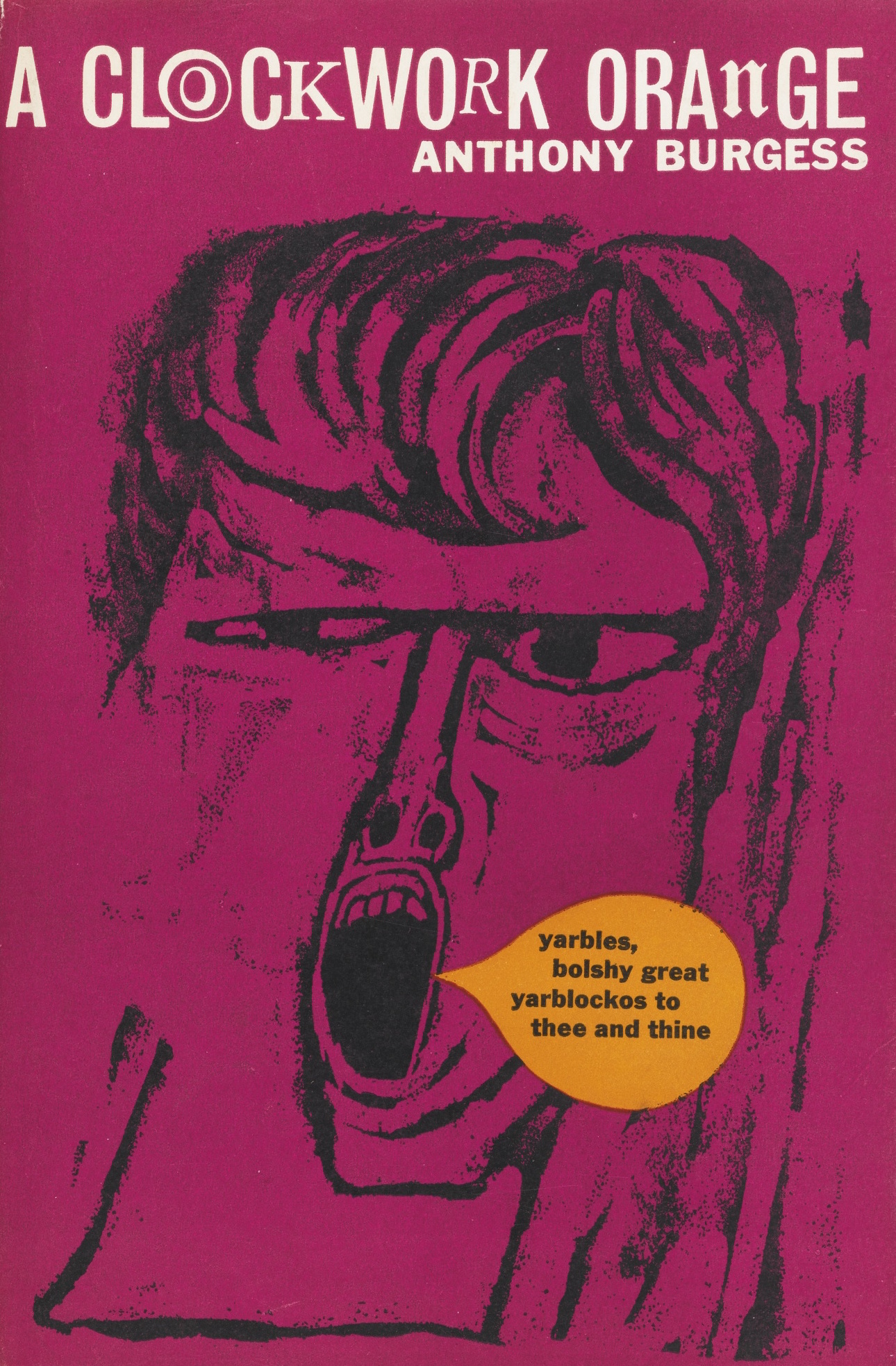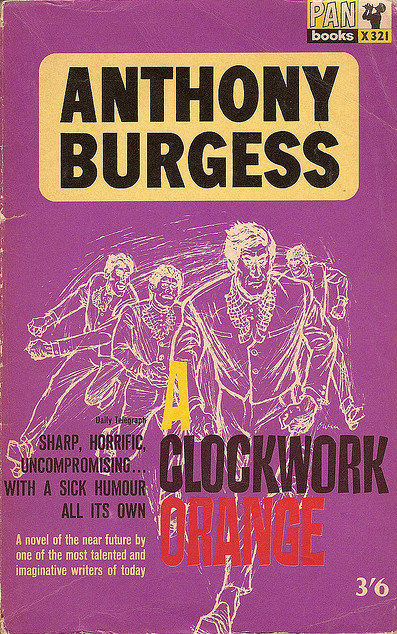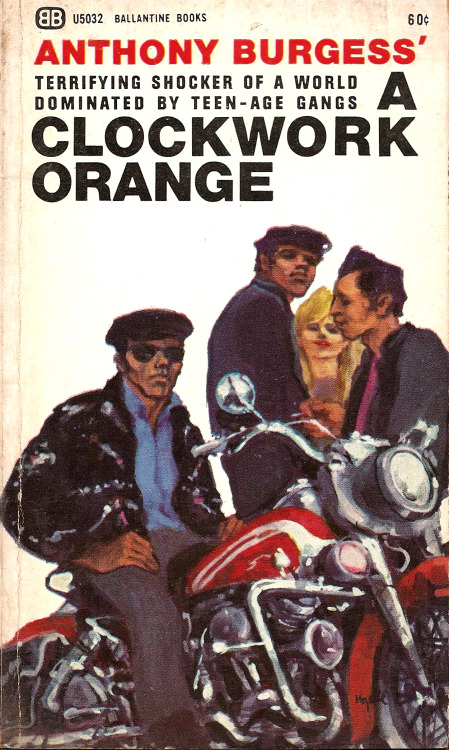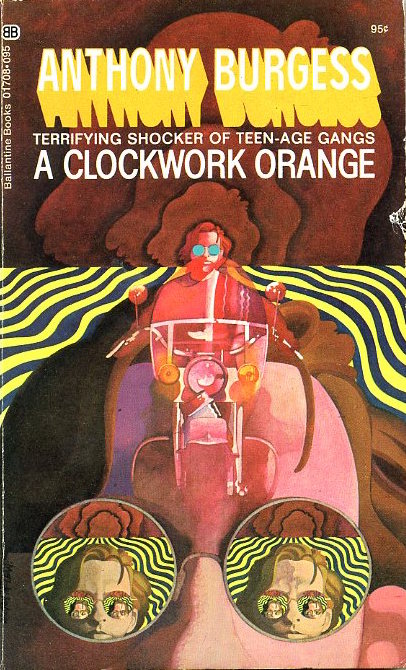 It has been a while between posts, I know. This site, as well as a number of other things in my life, has taken a back seat in order for me to meet a few pressing deadlines, in particular, working on a monograph for a English publisher on Norman Jewison’s 1975 dystopian science fiction classic, Rollerball.
It has been a while between posts, I know. This site, as well as a number of other things in my life, has taken a back seat in order for me to meet a few pressing deadlines, in particular, working on a monograph for a English publisher on Norman Jewison’s 1975 dystopian science fiction classic, Rollerball.
While Jewison was not a great fan of science fiction he was impressed by two science fiction films, both of them made by Stanley Kubrick: 2001: A Space Odyssey (1968) and A Clockwork Orange, released in 1971 (although it was not released in Australian until 1988). It is this latter film that is the subject of today’s Pulp Friday post.
Published by Anthony Burgess in 1962, A Clockwork Orange is set in a near future dystopian England suffering from an epidemic of extreme youth violence and economic stagnation. The book’s teenage protagonist, Alex, narrates the story of his various criminal exploits and the subsequent efforts of the conservative state authorities to rehabilitate him, in a made up language Burgess called ‘Nadsat’.
Burgess’s own politics were conservative, with a streak of anarchism running through his thinking. He wrote A Clockwork Orange in three weeks, influenced by his views of the growing youth culture in early sixties England. Although the infamous Bank Holiday riots between Mods and Rockers were two years away, Britain, like much of the Western world, was already in the throws of a major debate about juvenile delinquency and the growing cultural and sexual assertiveness of young people, which was associated in mainstream culture with increasing lawlessness and loosening morals.
Anyway, it was while researching my book on Rollerball, that I came across the above copy of the 1971 Ballantine Books edition of A Clockwork Orange in a second hand bookstore, the timing of the book obviously designed to feed into interest generated by the movie, which was released in the US in early 1972.
I thought Pulp Curry readers might be interested to see how other editions of Burgess’s novel were packaged. In addition to the 1971 Ballantine edition, below are five other examples of covers for A Clockwork Orange, sourced from the Internet.
The first two are hardcover editions, the first British edition published by Heinemann in 1962 and the first American printing by Norton in 1967.
The Pan Books edition is dated 1964. The second one down, published by Ballantine Books in 1965, emphasises the threatening nature of the violent youth gang in Burgess’s story, but, interestingly, portrays them as looking like a 1950s juvenile delinquent biker gang.
The third one down, the 1970 Ballantine edition, has a more psychedelic flavour to its cover art but maintains the association with bikers, the lawlessness of motorcycle gangs like the Hell’s angels being a major topic of public concern in America in the late 1960s and early 1970s.
























